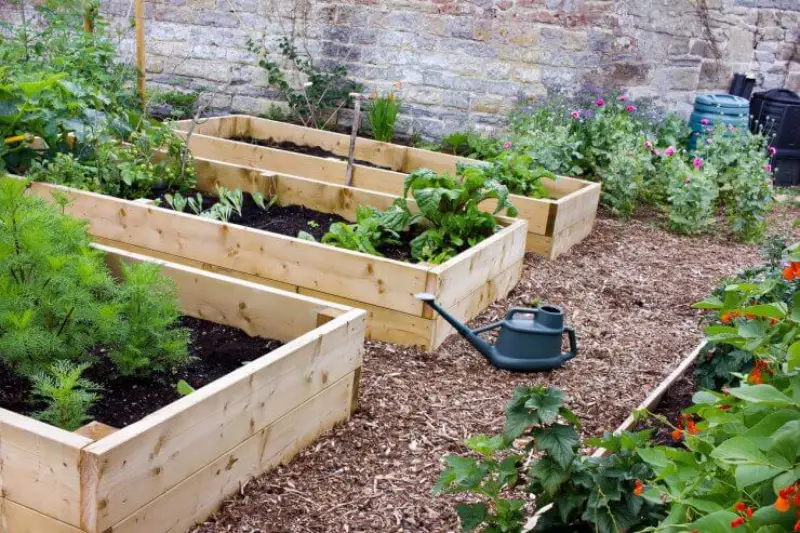Raised garden beds are an excellent solution for gardeners who want better soil control, easier maintenance, and a tidier, more organized outdoor space. Whether you’re growing vegetables, herbs, or flowers, raised beds offer versatility and efficiency — especially for those gardening in urban settings or with limited space.

Why Choose a Raised Garden Bed?
Raised garden beds come with multiple advantages:
- Improved soil drainage
- Reduced compaction and weeds
- Better control over soil quality
- Easier access for people with mobility issues
- Attractive and tidy appearance
Materials You’ll Need
For a basic 4×8 ft raised bed:
- 4 wooden planks (2×6 or 2×8 cedar or redwood are best)
- Galvanized screws or nails
- A power drill
- Weed barrier fabric
- Soil mix (garden soil + compost + peat moss)
Optional:
- Corner brackets for extra strength
- Chicken wire or mesh if gophers or moles are a concern
How to Build a Raised Garden Bed (Step-by-Step)
1. Choose the Right Location
Pick a spot with at least 6-8 hours of sunlight per day. Make sure it’s relatively flat and easily accessible.
2. Measure and Mark the Area
Use string or garden stakes to outline the bed’s shape and size.
3. Prepare the Ground
- Remove grass or weeds from the area.
- Lay down weed barrier fabric.
- If pests are common, add hardware cloth underneath.
4. Assemble the Frame
- Connect the wooden boards into a rectangular shape.
- Secure corners using screws or brackets.
5. Add Soil Mix
Create a fertile, well-draining mix:
- 60% topsoil
- 30% compost
- 10% perlite or peat moss
Water thoroughly after filling.
Best Plants for Raised Beds
Raised beds are ideal for:
- Vegetables: Lettuce, carrots, tomatoes, radishes, peppers
- Herbs: Basil, thyme, mint, oregano
- Flowers: Marigolds, zinnias, nasturtiums
Tip: Mix flowers and vegetables for better pest control and aesthetics.
How to Maintain Your Raised Bed
1. Water Smartly
Raised beds dry out faster. Use:
- Soaker hoses
- Drip irrigation
- Mulch to retain moisture
2. Fertilize Regularly
Use organic fertilizers like:
- Fish emulsion
- Compost tea
- Slow-release organic pellets
3. Replenish Soil Each Season
Top up with fresh compost or composted manure to maintain fertility.
4. Control Weeds
- Add mulch every few weeks
- Pull out any intruders early
Common Mistakes to Avoid
- Using treated wood: It can leach chemicals into the soil
- Not leveling the bed: Causes uneven water distribution
- Overfilling soil: Leaves no room for mulch or watering
- Planting too densely: Limits airflow and increases disease risk
Final Thoughts
Building a raised garden bed is a rewarding and beginner-friendly way to enhance your outdoor space. With minimal tools and effort, you can enjoy more productive, easier-to-maintain gardening — whether you’re planting veggies, herbs, or a bed full of blooms.
🏡 Ready to take your garden to the next level? A raised bed might just be your new favorite weekend project.





